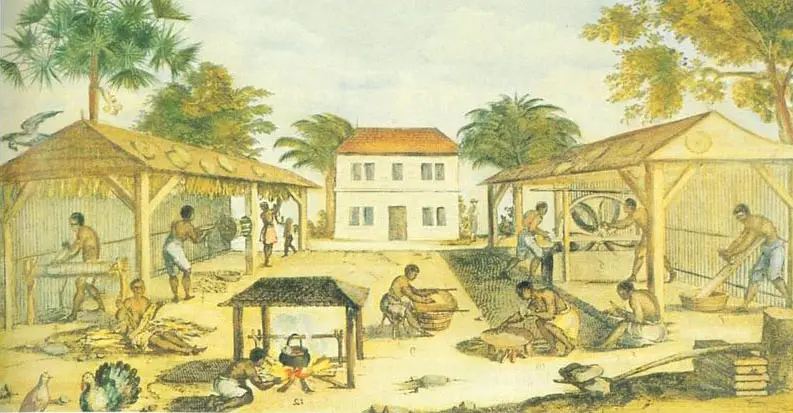The Problem of Slavery
Europeans in the 17th and 18th centuries accepted slavery as part of their everyday life. As they expanded in exploration and took on new lands, they looked at all of the natives that they came into contact with as barbarians and stupid.
Their claim for new lands for their individual countries included claiming the natives as slaves for labor. This attitude was shared by the colonists as they established new settlements in North America.
Slaves were typically kidnapped in Africa and then brought to the colonies for hard labor and servants. Even many of the founders of what would eventually be the United States had slaves.

It’s believed that slavery in the colonies began with the privateer named The White Lion in 1619. The Africans had been taken from a Portuguese slave ship. He transported twenty African slaves to the area of Jamestown, Virginia.
Records are sketchy as to exactly how many slaves were brought to the colonies, but it’s thought that there were around 6-7 million in the 18th century. They were mostly brought to work the farms and growing plantations in what is now known as the Southern U.S. states, helping on the plantations with rice, tobacco, and indigo.
Later, due to economic changes, the demand for cotton exploded, and slaves were used to first pick the cotton and remove the seeds by hand. After automation of the cotton gin was developed, they no longer had to remove the seeds.
The northern states didn’t have as much slavery because they were the business people that were gaining wealth on the slave trade and their investments in the plantations of the south. Slavery was gotten rid of in most of the northern states between 1774 and 1804 but remained in the south.
In 1808 the U.S. Congress had outlawed the slave trade from Africa, but slavery remained constant in the U.S. with the population tripling over the following fifty years.
It’s believed that by 1860 the population of slaves was almost four million, with over half residing in the southern states for the cotton plantations. The numbers of slaves in the antebellum south made up almost one-third of the total population.
Slaves weren’t allowed to get any form of education, and they had restricted movements within the areas that they lived. Any rebellions that happened among the slaves were punished with violence or even death.
Although the marriages were never legally recognized by the white masters, many married and had families. It wasn’t uncommon for the slave masters to sell off members of families to different owners.
Throughout the 1800s, there were many slave rebellions. These were violent uprisings that put the lives of the slaves and their families at risk. The revolt of 1831 in Southampton County, Virginia, also ended up with 60 white people being killed until the state militia and local white people stopped them.
This revolt was of specific importance as the white people used it as an example that Blacks were inferior and barbarians that required discipline. The revolts caused southern states to enact laws that limited the assembly of slaves and their movements.
The abolitionist movement to free slaves began to spread in the northern states, and from 1830-1860, the movement expanded to become more popular.
Free black supporters such as Frederick Douglass was joined by white supporters such as William Lloyd Garrison, who was the founder of The Liberator, a radical newspaper. Uncle Tom’s Cabin was published by author Harriet Beecher Stowe.
It was during this time of the 1830s that people in the northern states began to help slaves escape using what called the Underground Railroad. This was a group of people that helped to guide slaves as they escaped to various homes and hiding places until they could reach the northern states. It’s thought that around 40,000-100,000 slaves were helped to escape.
Q&A:
What is the name of the privateer that is thought to have started African slavery?
The White Lion
How many slaves are thought to have been brought to the colonies from Africa in the 18th century?
6-7 million
What is the name of the movement that believed in freeing the slaves?
Abolitionist Movement
The slave revolt in 1831 in Southampton County, Virginia, resulted in what changes in the law in the southern states?
restriction of movement and gathering in groups by slaves
What was the movement of people that helped escaping slaves with guidance and hiding places called?
The Underground Railroad
How many slaves are estimated to have been helped to escape and relocate to northern states in the 1830s?
40,000-100,000



